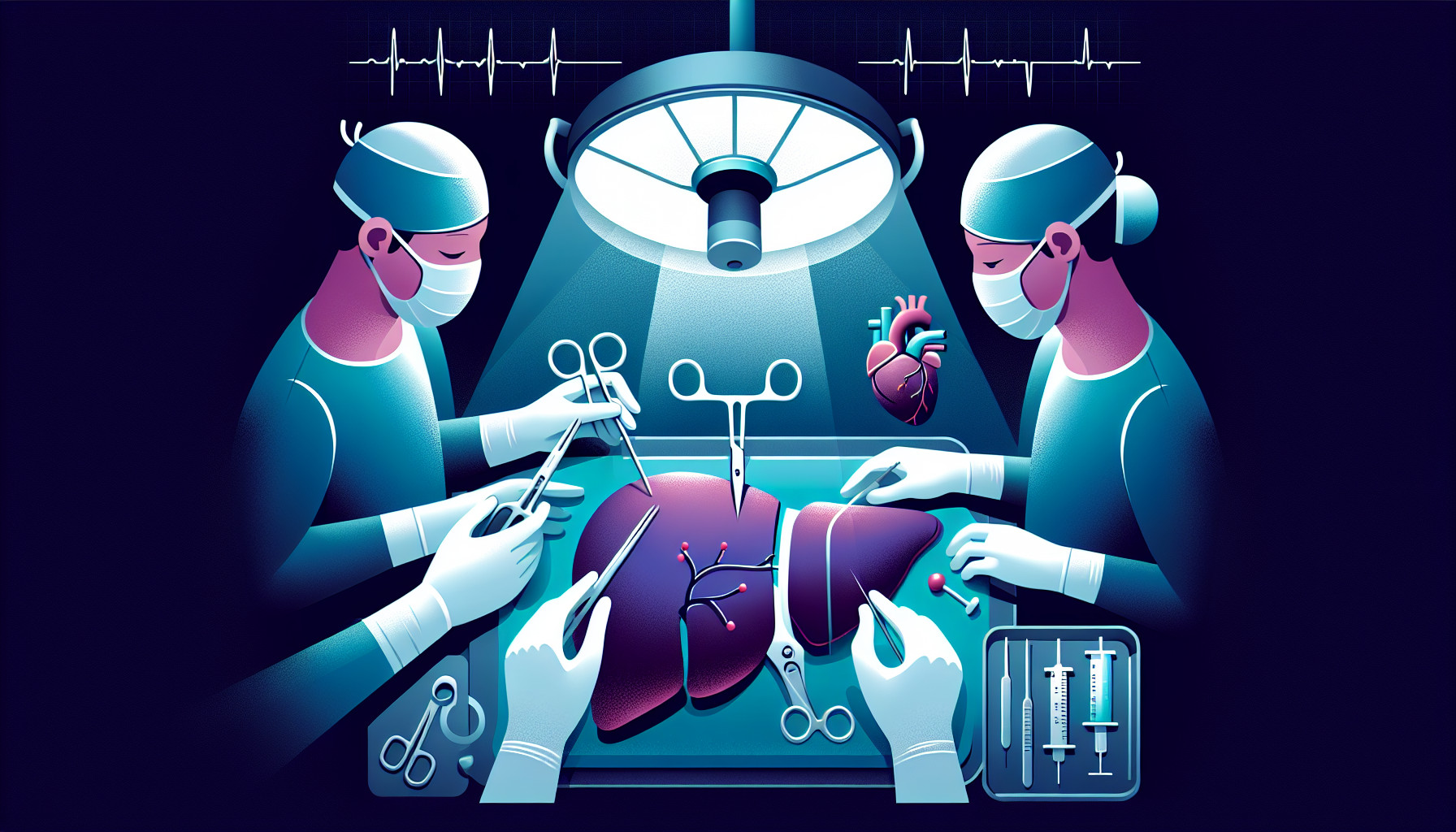Our Summary
The research paper discusses how living donor liver transplants (LDLT), where a healthy person donates a part of their liver, have become more common in the United States. This has increased the number of available livers for transplant, reduced waiting times, and decreased the number of people dying while waiting for a liver.
The paper talks about how we can expand LDLT further. This could be done by allowing donations from people who previously were not allowed to donate, like older people or those with minor liver issues, and by allowing more people to be eligible to receive a liver, like older people or those with certain types of cancer.
The paper also suggests that in the future, LDLT could be used more in treating liver cancer, including complex cases.
For these changes to happen, surgeons need to continue improving their skills and techniques, and the health community needs to remain aware of the risks and benefits to both donors and recipients. The ultimate goal is to make liver transplants more accessible to those with severe liver disease and certain cancer patients.
FAQs
- What is a living donor liver transplant (LDLT) and how has its prevalence impacted liver transplants in the United States?
- What suggestions does the research paper make to further expand the use of LDLT?
- What changes are needed to make LDLT more accessible to those with severe liver disease and certain cancer patients?
Doctor’s Tip
A helpful tip a doctor might tell a patient about liver transplant is to follow a healthy diet and exercise regularly to maintain overall liver health both before and after the transplant. It is also important to take all prescribed medications as directed, attend follow-up appointments, and communicate any concerns or changes in symptoms to your healthcare team promptly. Additionally, avoiding alcohol and tobacco can help protect the new liver and improve overall health outcomes.
Suitable For
Patients who are typically recommended for a liver transplant include those with severe liver disease, such as cirrhosis or hepatitis, who have not responded well to other treatments. Patients with certain types of liver cancer may also be candidates for a liver transplant. Additionally, patients who have acute liver failure or certain genetic conditions that affect the liver may be recommended for a liver transplant.
In general, patients who are in good overall health and have a strong support system are more likely to be recommended for a liver transplant. It is important for patients to undergo a thorough evaluation by a transplant team to determine if they are a suitable candidate for a liver transplant and to discuss the risks and benefits of the procedure.
Timeline
Before liver transplant:
- Patient is diagnosed with severe liver disease or liver cancer.
- Patient undergoes extensive testing and evaluation to determine if they are a suitable candidate for a liver transplant.
- Patient is placed on the national transplant waiting list and waits for a suitable donor liver to become available.
- Patient’s health deteriorates as they wait for a liver transplant, leading to complications and a decreased quality of life.
After liver transplant:
- Patient receives a donor liver through either deceased donor transplant or living donor transplant.
- Patient undergoes surgery to remove the damaged liver and replace it with the donor liver.
- Patient recovers in the hospital for several weeks, monitored closely for any complications.
- Patient undergoes extensive rehabilitation and follow-up care to ensure the success of the transplant.
- Patient experiences improved liver function and quality of life post-transplant, with the potential for a longer and healthier life.
What to Ask Your Doctor
- What are the risks and benefits of a living donor liver transplant compared to a deceased donor liver transplant?
- How long is the recovery process after a liver transplant, and what kind of support will I need during this time?
- What is the success rate of liver transplants at this hospital, and what is the average survival rate for patients who undergo this procedure?
- How will my quality of life be affected after a liver transplant, and what kind of long-term care will I need?
- Are there any alternative treatments or therapies that could be considered before pursuing a liver transplant?
- What is the process for finding a suitable living donor, and what criteria do they need to meet in order to be considered?
- How often will I need to follow up with my healthcare team after a liver transplant, and what kind of monitoring will be required to ensure the success of the transplant?
- How will my medications change after a liver transplant, and what are the potential side effects of these medications?
- What is the financial cost associated with a liver transplant, and what kind of insurance coverage is typically needed for this procedure?
- Are there any specific lifestyle changes or restrictions that I will need to follow after a liver transplant to ensure the best possible outcome?
Reference
Authors: Bambha K, Biggins SW, Hughes C, Humar A, Ganesh S, Sturdevant M. Journal: Liver Transpl. 2025 Jan 1;31(1):92-104. doi: 10.1097/LVT.0000000000000462. Epub 2024 Aug 23. PMID: 39172018
